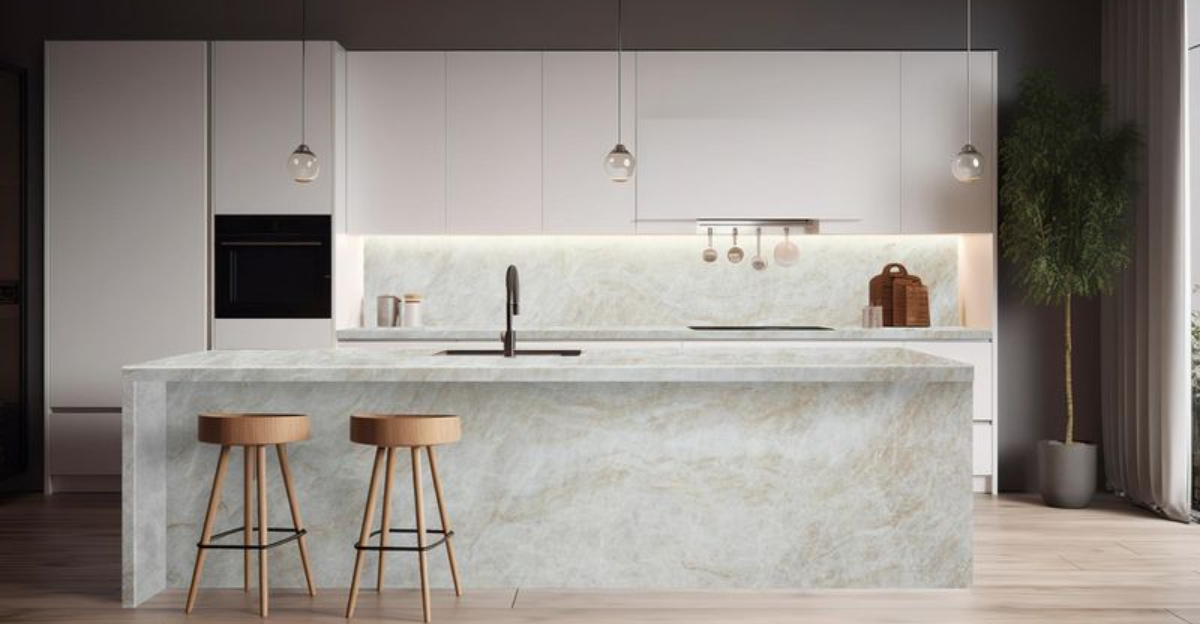The kitchen isn’t just where we cook anymore—it’s become the showpiece of modern homes. As we inch closer to 2025, luxury kitchen design has evolved dramatically, leaving certain dated elements firmly in the past.
Top designers are embracing cleaner aesthetics, smarter technology, and more sustainable materials while banishing the overdone trends that scream “builder-grade.” Ready for a peek at what the elite culinary spaces of tomorrow won’t tolerate?
1. Exposed Microwave Eyesores
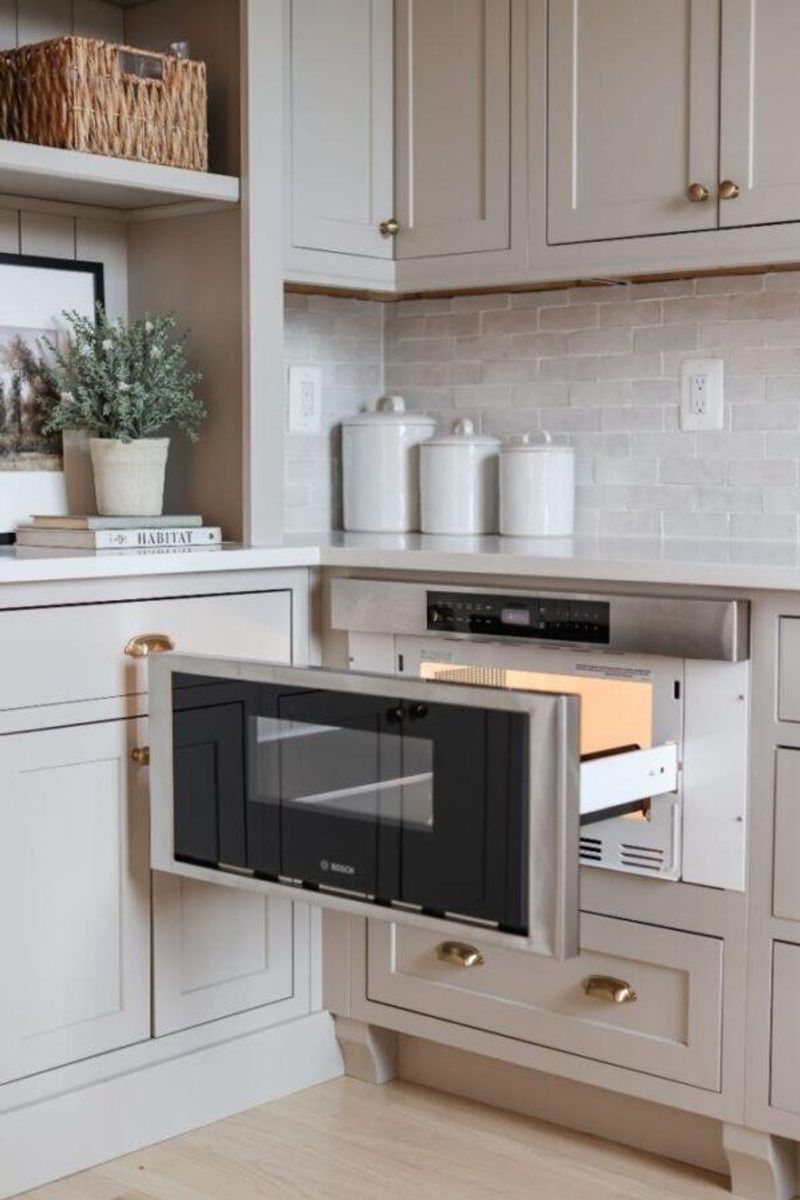
Counter-hogging microwaves vanished from high-end kitchens years ago, but 2025 takes concealment to artful extremes. Designers now hide these necessary evils behind custom panels or tuck them into dedicated appliance garages.
The microwave drawer—installed under counters or islands—has become the only acceptable visible option. Even then, it’s disguised with matching cabinetry fronts that maintain the kitchen’s seamless look.
2. Cabinet Hardware Chaos
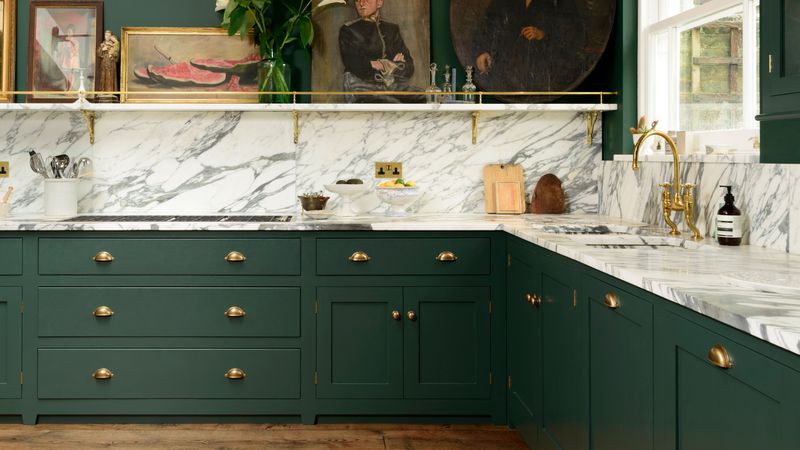
Mismatched knobs and pulls purchased in bulk from big box stores? The design sin of a bygone era. Luxury kitchens sport meticulously curated hardware in unexpected materials—hand-forged bronze, brushed brass with patina, or even semi-precious stones.
Gone are the days of chrome everything. Hardware now functions as jewelry for cabinetry, with bespoke pieces often commissioned specifically for the space. Mass-produced options simply won’t cut it anymore.
3. Subway Tile Saturation
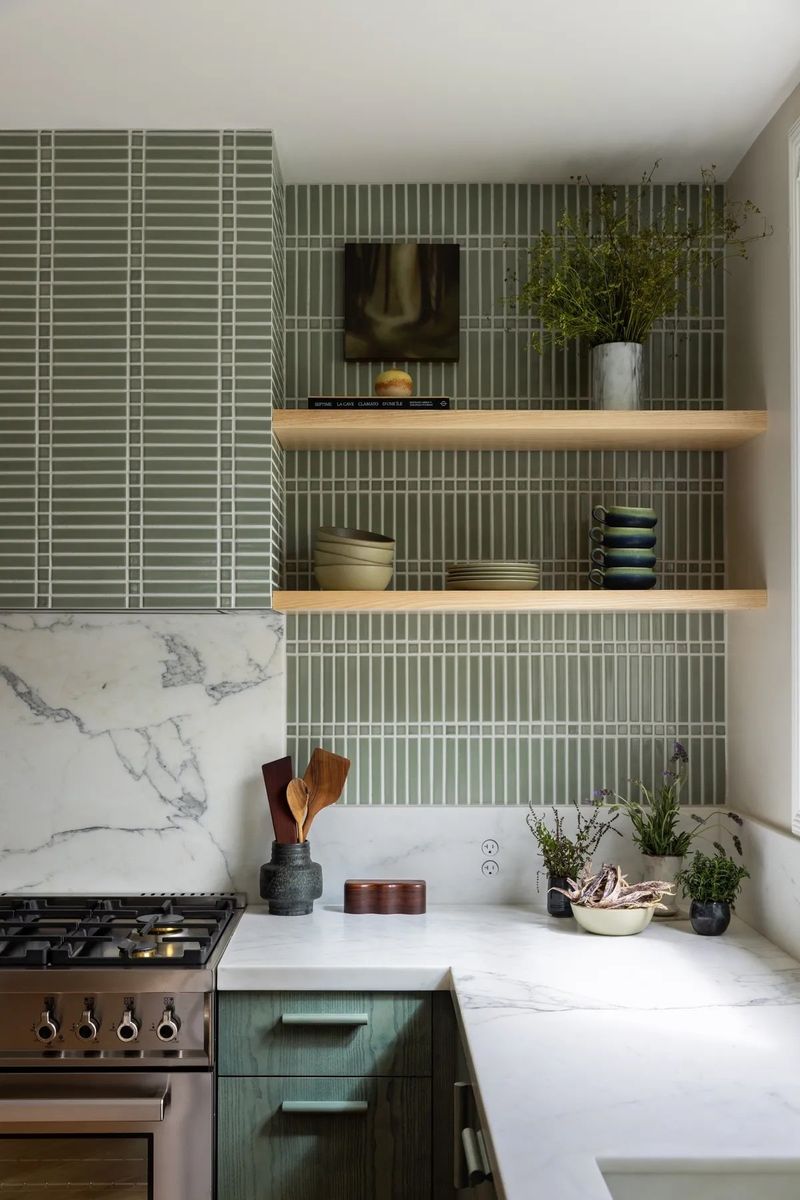
Once the darling of design shows, subway tile has finally surrendered its crown. The 3×6 white rectangles that dominated backsplashes for over a decade now signal design fatigue rather than timeless appeal.
Luxury kitchens embrace handmade zellige tiles with dimensional variations, large-format stone slabs, or textured glass panels instead. The uniform grid of subway tile screams “I renovated in 2015” rather than “I understand luxury in 2025.”
4. Granite Countertop Graveyards
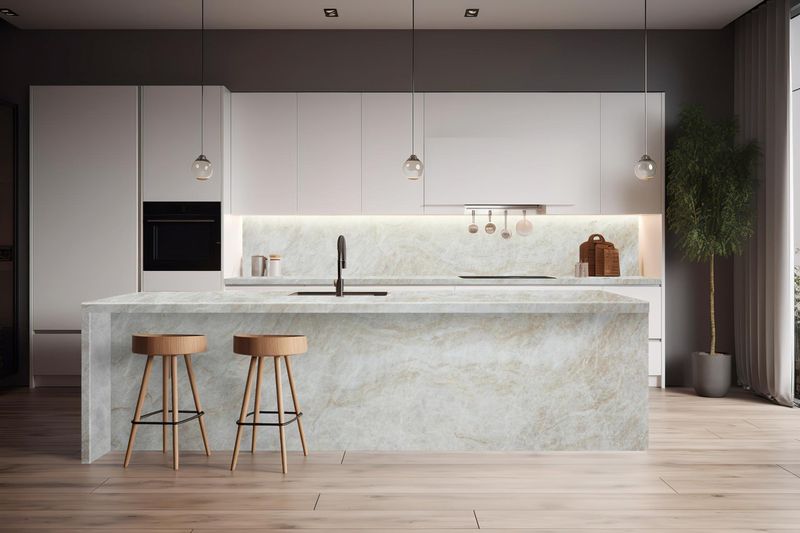
Speckled granite—that busy, multicolored stone that once commanded premium prices—now reads as decidedly middle-class. The veined patterns that fought for attention with everything else in the kitchen have been quietly shown the door.
In their place? Ultra-thin porcelain slabs that mimic natural stone without the maintenance, or actual quartzite with subtle, sophisticated veining. Luxury kitchens whisper rather than shout, and busy granite simply makes too much noise.
5. Pendant Light Predictability
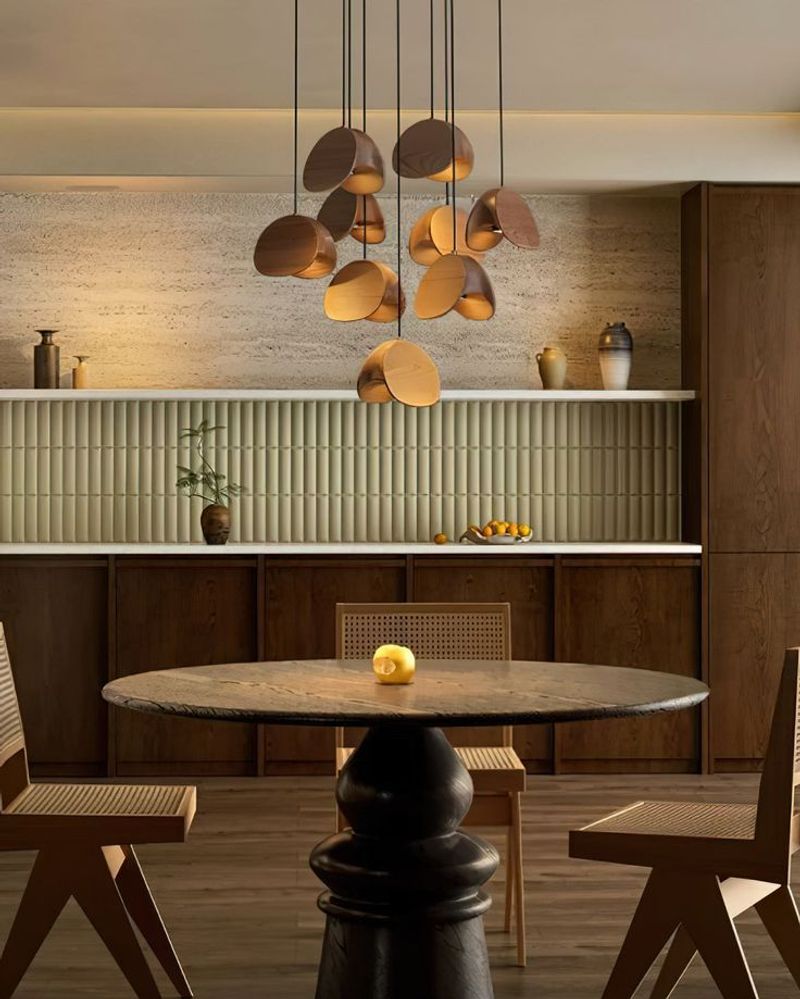
The trio of identical pendants marching in formation above islands has become the equivalent of “live, laugh, love” for kitchens. Designers now scoff at these predictable formations, opting instead for statement lighting that serves as functional sculpture.
Asymmetrical arrangements, mixed-medium fixtures, or a single dramatic piece now reign supreme. Lighting has evolved from mere illumination to artistic expression—the jewelry of the room rather than just functional necessities.
6. Stainless Steel Supremacy
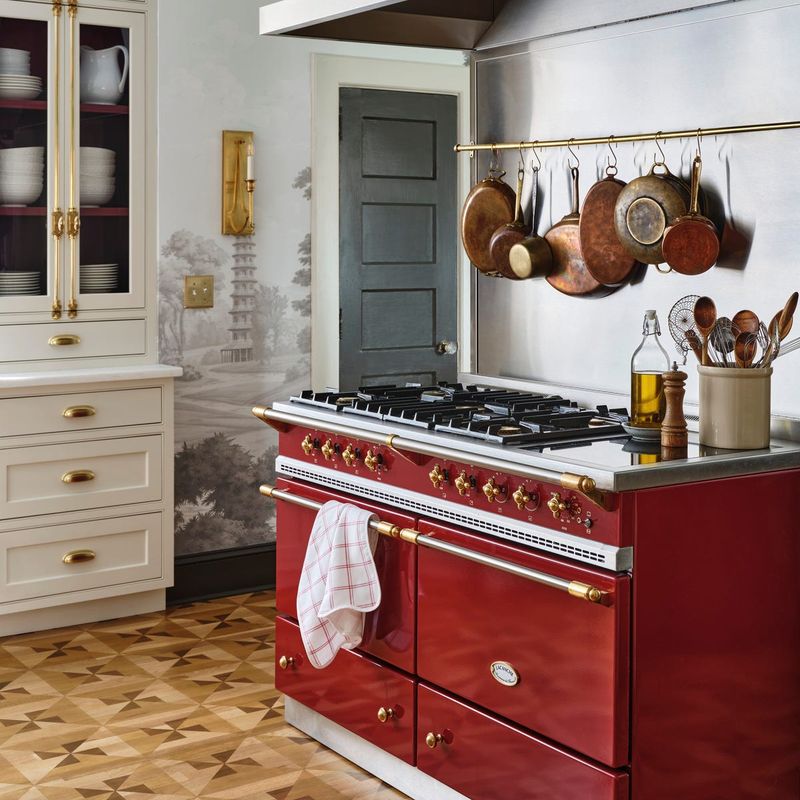
The cold, clinical look of matching stainless steel appliances—once the hallmark of an upscale kitchen—has cooled considerably in designer circles. That refrigerator-range-dishwasher trifecta in identical finish now signals lack of imagination rather than luxury.
Elite kitchens integrate appliances behind custom panels or mix finishes thoughtfully. Some showcase a single statement piece—perhaps a La Cornue range in an unexpected hue—while others embrace the new wave of matte black or bronze-finished professional-grade equipment.
7. Over-Cabinet Dust Collectors
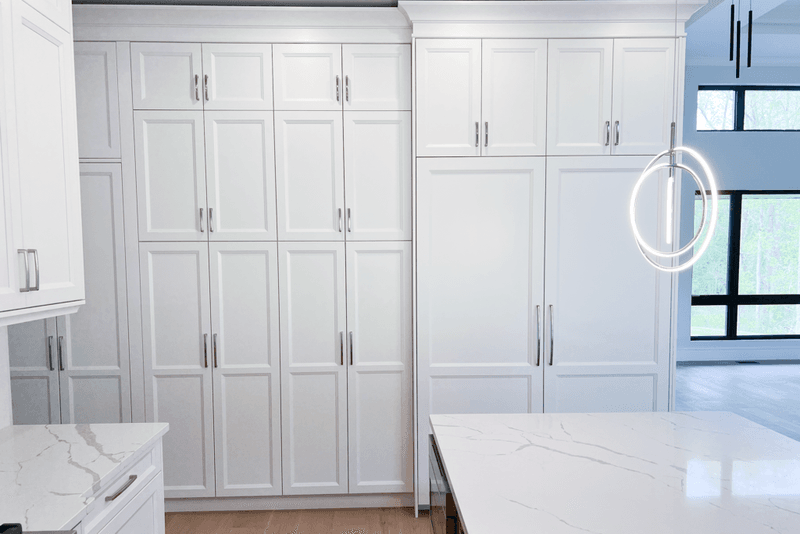
The awkward gap between upper cabinets and ceiling—once filled with dusty baskets or ceramic roosters—has been permanently sealed. Luxury kitchens now extend cabinetry to the ceiling, eliminating these dust-collecting dead zones entirely. The haphazard “stuff repository” above cabinets signals amateur hour in sophisticated 2025 kitchens.
8. Faux Farmhouse Fetish
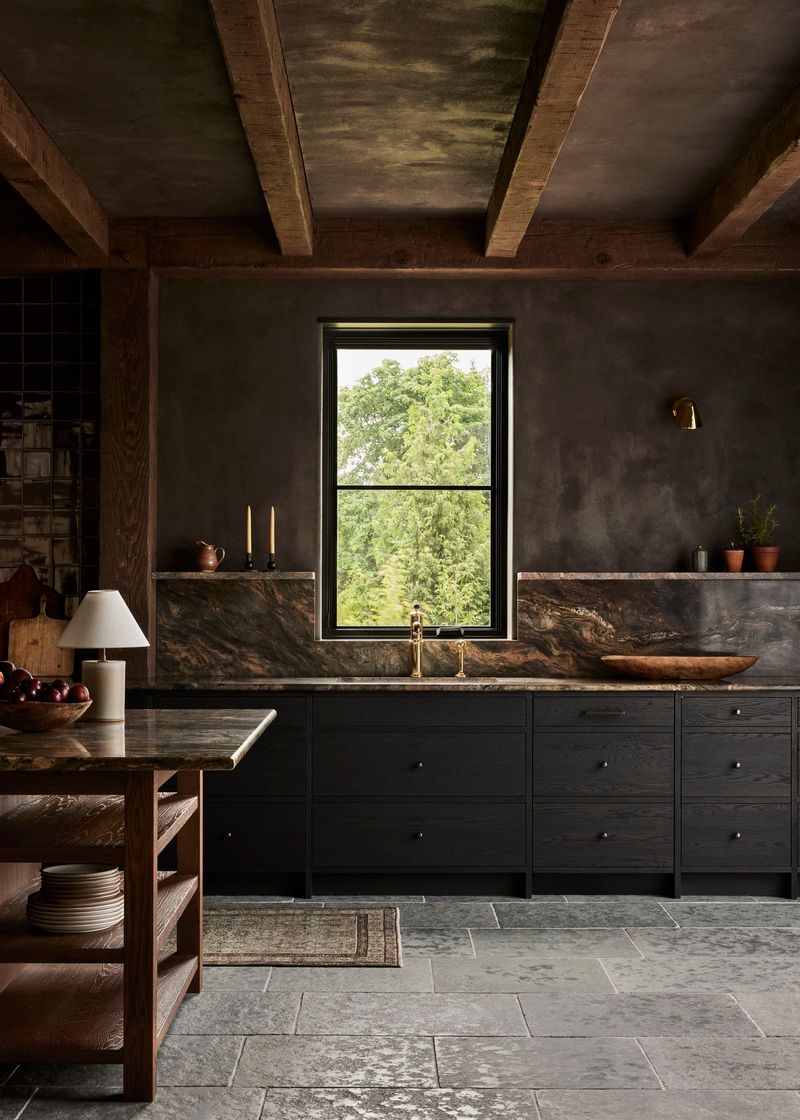
The manufactured rustic look—barn doors on pantries, distressed finishes on new wood, and signs proclaiming “EAT” in weathered typography—has been permanently banished from luxury spaces. Designers now cringe at anything artificially aged or intentionally shabby.
Authentic materials with natural patina have replaced the faux-aged aesthetic. When rustic elements appear, they’re genuinely antique or artisanal—perhaps a 19th-century French butcher block or hand-forged iron hardware that carries real history rather than mass-produced nostalgia.
9. Fluorescent Light Fiascos
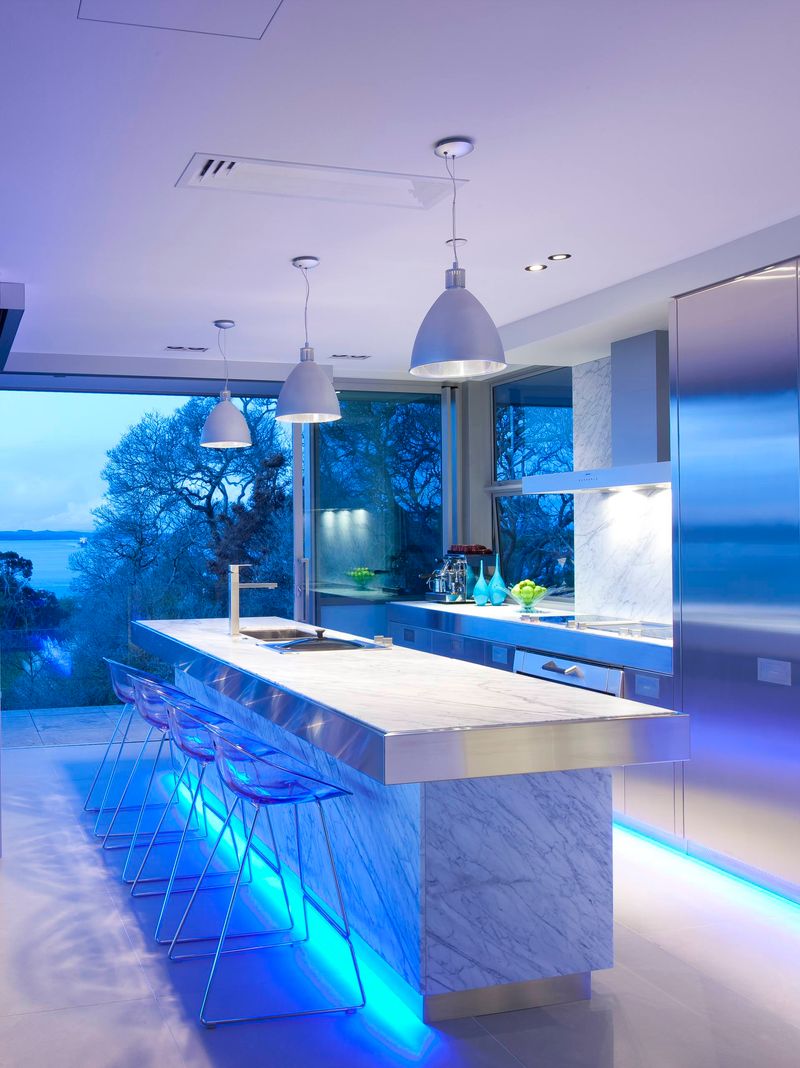
Harsh overhead lighting—especially those recessed fluorescent boxes with plastic covers—has been extinguished from forward-thinking kitchens. Designers now layer lighting with the precision of cinematographers, ensuring every surface is properly illuminated without creating glare or shadows.
Tunable LED systems that shift color temperature throughout the day have become standard. The flat, unflattering wash of light from builder-grade fixtures is now considered as offensive as serving dinner on paper plates.
10. Single-Height Countertop Conformity
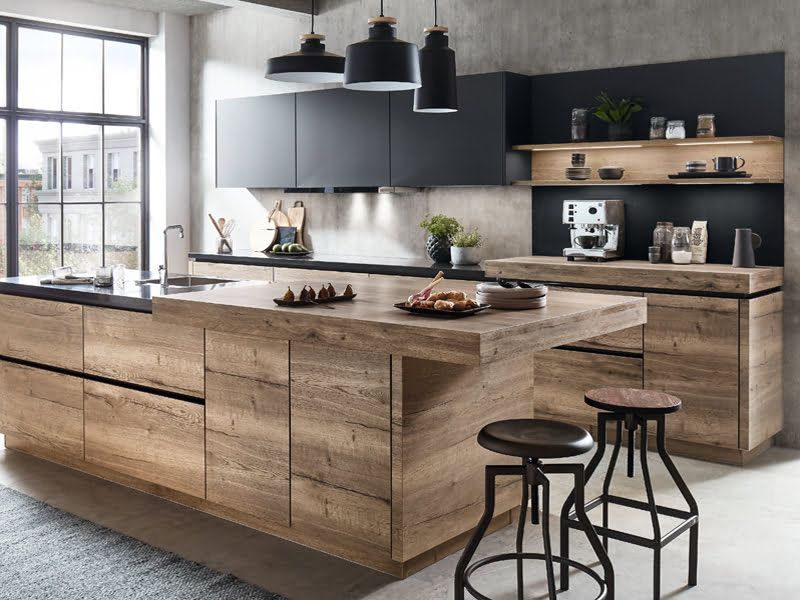
The monotonous plane of countertops all installed at the same height has been replaced by more ergonomic, task-specific surfaces. Baking stations sit lower for comfortable dough work, while prep areas near cooktops might be slightly higher to reduce back strain.
Islands now incorporate multiple heights—perhaps a raised bar for casual dining alongside a lower surface for food prep. This functional approach signals thoughtful design rather than cookie-cutter construction that prioritized ease of installation over human comfort.
11. Range Hood Neglect
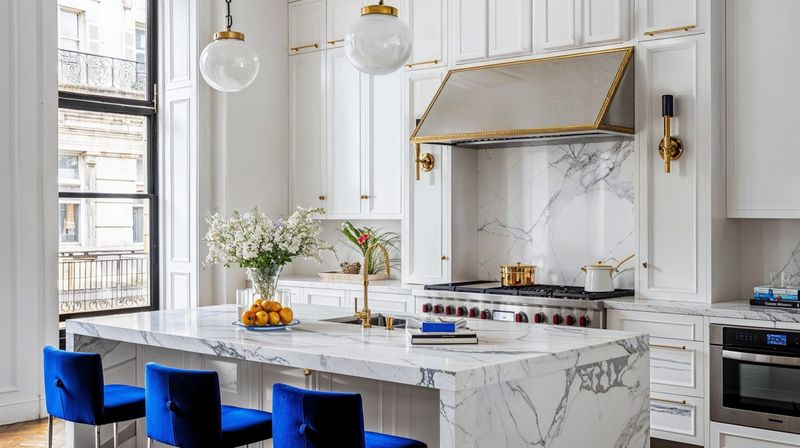
Wimpy, undersized range hoods that barely capture cooking odors have no place in prestigious kitchens anymore. The sad, builder-grade metal boxes that once hung ineffectively above ranges have been replaced by architectural statements that actually work.
Custom hood designs—whether sleek and integrated or boldly sculptural—now command attention. Function follows form, with powerful, quiet ventilation systems that actually extract cooking fumes rather than just making noise while rearranging grease particles in the air.
12. Oak Cabinet Obituaries
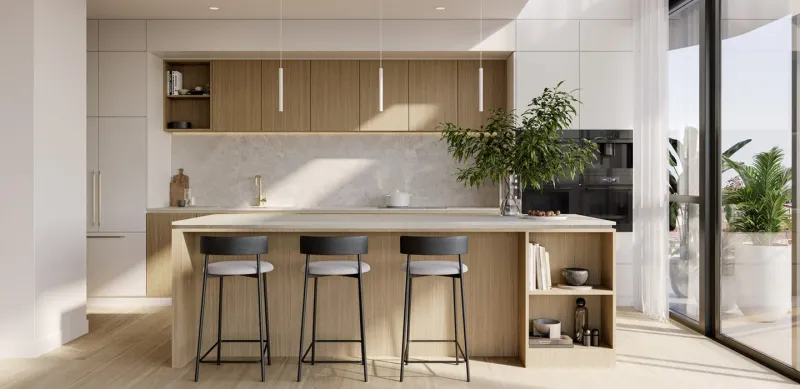
The golden oak cabinets that dominated kitchens for decades—complete with cathedral arches and visible wood grain—have been permanently retired. Their orange-tinted finish and dated profiles scream “1990s builder special” rather than timeless luxury.
Modern cabinetry embraces either ultra-matte finishes in complex neutrals or richly stained woods with subtle grain patterns. White oak has replaced its golden cousin, appearing in rift-cut applications that showcase its linear grain without the dated yellow undertones.
13. Pot Rack Pandemonium

The ceiling-mounted pot rack—that dusty showcase of mismatched cookware dangling precariously overhead—has been dismantled in sophisticated kitchens. Designers now consider exposed cookware storage to be visual clutter rather than practical organization.
Custom drawer systems with specialized inserts keep pots and pans neatly hidden. Cookware on display is carefully curated—like a collection of copper pieces showcased on a single wall shelf, serving as intentional art rather than mere storage.
14. Fridge Family Photo Galleries
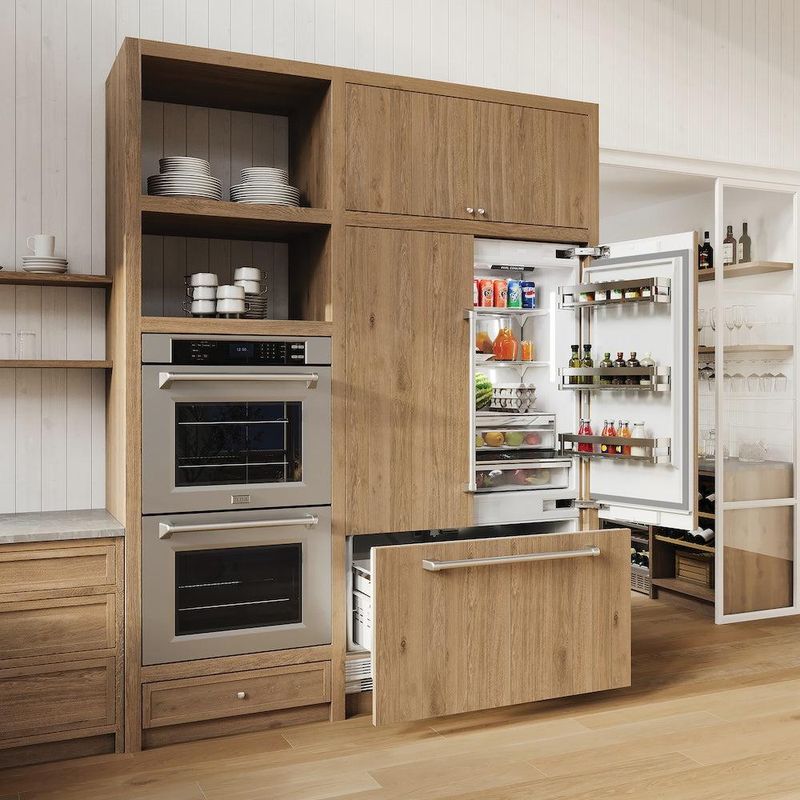
Refrigerator doors plastered with magnets, children’s artwork, and reminder notes have been decluttered from upscale kitchens. The gallery of daily life that once adorned appliance fronts is now considered visual noise in streamlined spaces.
Panel-ready refrigerators that disappear into cabinetry have replaced the bulletin board approach. Family photos or children’s art do appear, and they’re thoughtfully framed and displayed in dedicated areas, elevating personal mementos to proper art status rather than haphazard collections.
15. Exposed Trash Can Eyesores
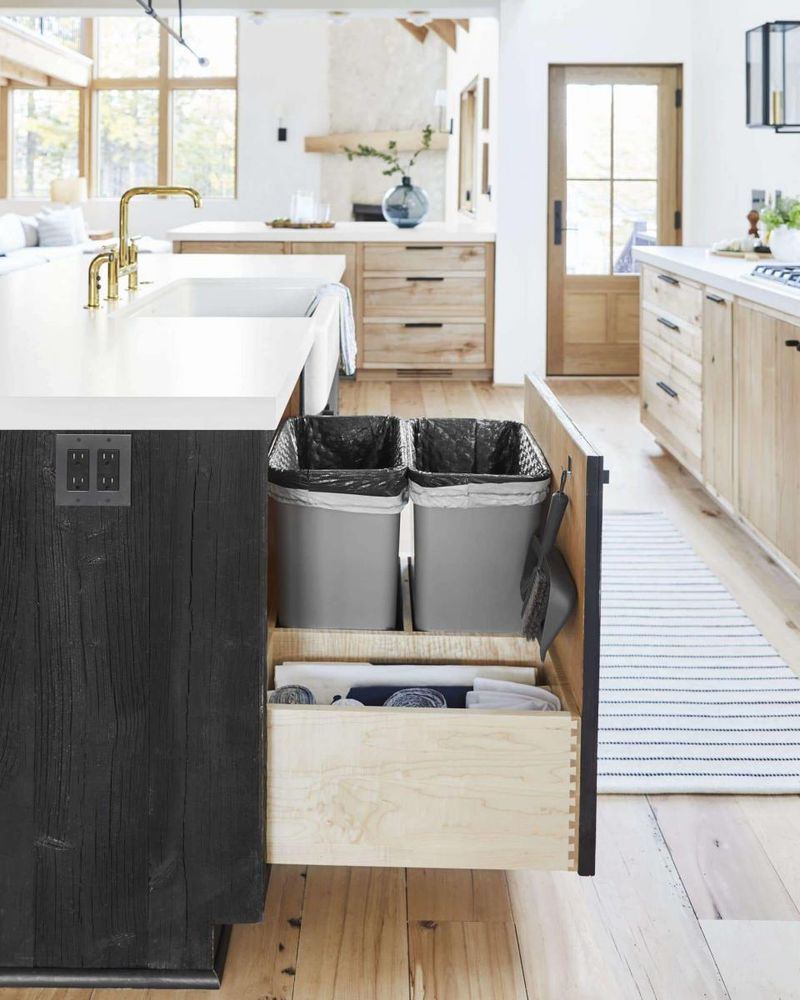
Free-standing garbage bins—even those sleek stainless steel models with foot pedals—have been permanently concealed in refined kitchens. The visual reminder of waste has no place in spaces dedicated to culinary creation.
Pull-out systems with multiple sorting bins for recycling, composting, and landfill waste now hide discreetly behind cabinet panels. Some ultra-luxury kitchens even incorporate vacuum systems that whisk food scraps away during prep, eliminating the need for exposed compost containers entirely.
16. Countertop Appliance Clutter
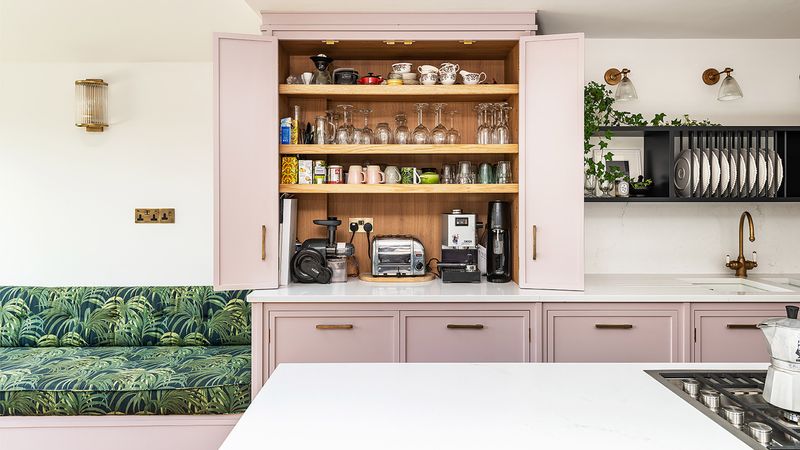
The parade of small appliances lining countertops has marched out of sight in high-end kitchens. Designers now mandate clean, uninterrupted work surfaces rather than displays of coffee makers, toasters, and blenders standing at attention.
Appliance garages with custom doors, dedicated breakfast stations with retractable panels, or specially designed drawers with lift mechanisms now house these everyday tools. When not actively in use, they disappear completely, leaving countertops free for actual cooking rather than storage.
17. Cabinet Soffit Sadness
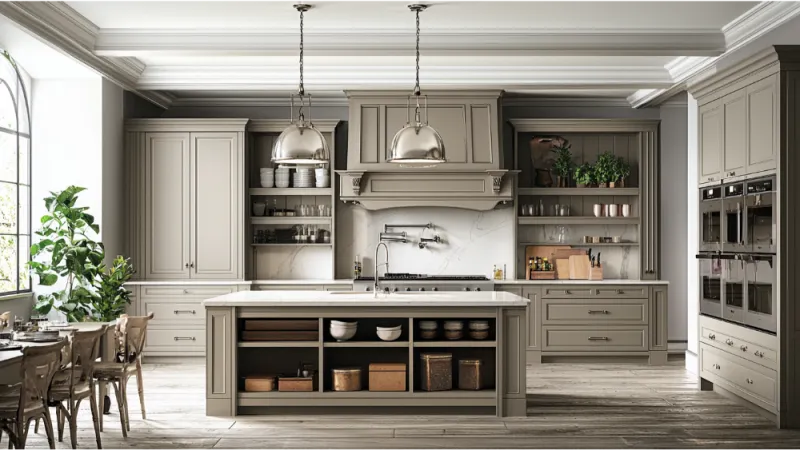
Those awkward soffits—the boxy structures that once filled the gap between cabinets and ceiling—have been architecturally excised from refined kitchens. Their only purpose was hiding ductwork or masking cabinet height limitations, signaling compromise rather than intention.
Modern luxury kitchens either extend cabinetry to the ceiling or create intentional negative space with floating shelves. Mechanical systems must be accommodated, they’re incorporated into ceiling designs that enhance rather than detract from the overall aesthetic.
18. Tile Countertop Tragedies
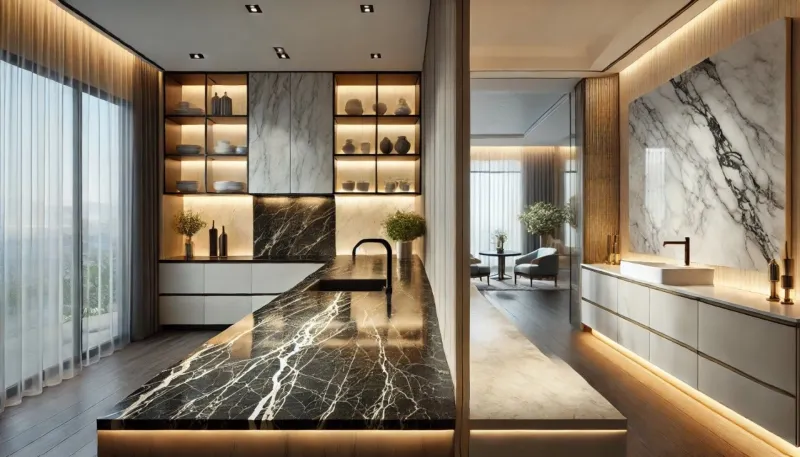
Tiled countertops—with their impossible-to-clean grout lines collecting food particles and stains—have been permanently demolished in upscale kitchens. Once considered practical in certain regions, they’re now viewed as unhygienic relics of questionable taste.
Seamless surfaces reign supreme, whether natural stone, engineered quartz, or the increasingly popular sintered surfaces that resist heat, stains, and scratches. The grout grid that once mapped kitchen work areas has been smoothed away in favor of continuous planes that don’t harbor bacteria.
19. Mismatched Cabinet Finishes
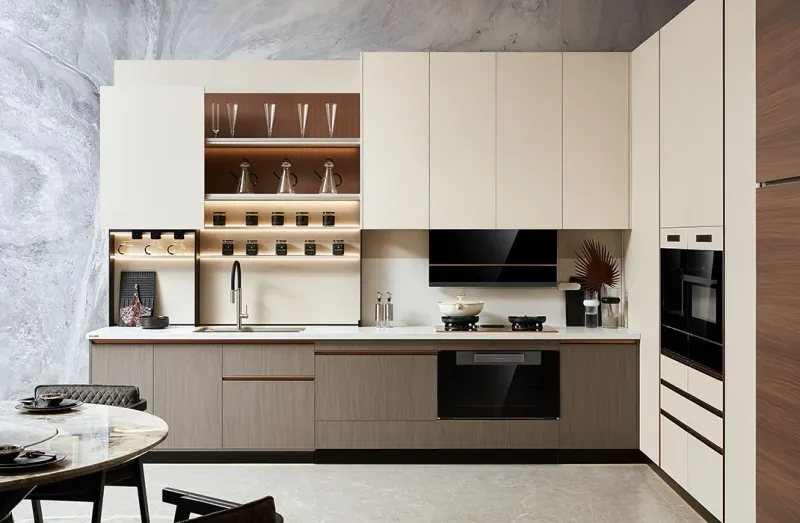
The once-trendy mix of painted and stained cabinets combined without thought or intention has fallen from favor. Those kitchens where upper cabinets were suddenly painted white while base cabinets remained in their original wood finish now look like halfway renovations rather than deliberate design choices.
Today’s designers blend multiple finishes with clear purpose—like a statement island in a complementary shade or a highlighted zone with contrasting material. Random mixes have evolved into deliberate color stories.
20. Fluorescent Backsplash Follies
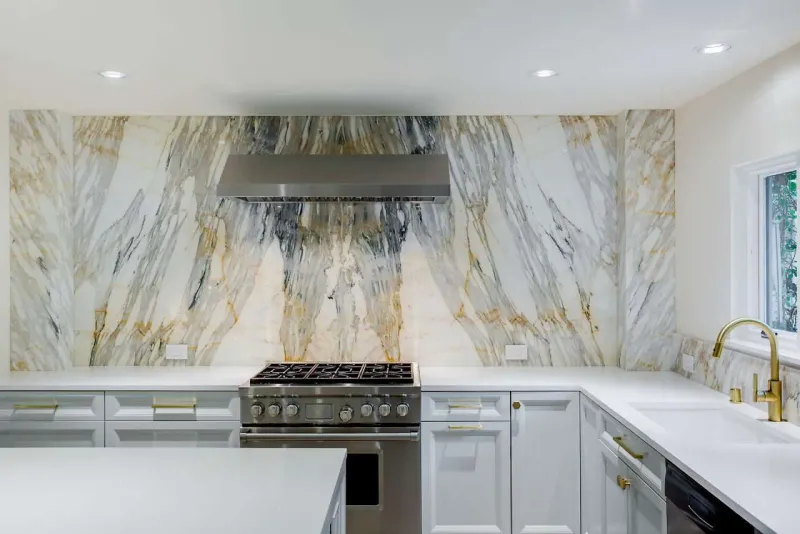
Glass mosaic backsplashes in vivid blues and greens—those shimmery little tiles that once signaled “I’ve upgraded!”—now date a kitchen as firmly as avocado appliances. Their busy patterns and often clashing colors fight with everything else in the room.
Designers have embraced quieter backsplash solutions with textural interest rather than chromatic competition. Handmade tiles with subtle variations, book-matched stone slabs extending from countertops, or even plaster finishes treated with specialized sealants now create sophistication through restraint rather than visual noise.
21. Wire Basket Storage Woes
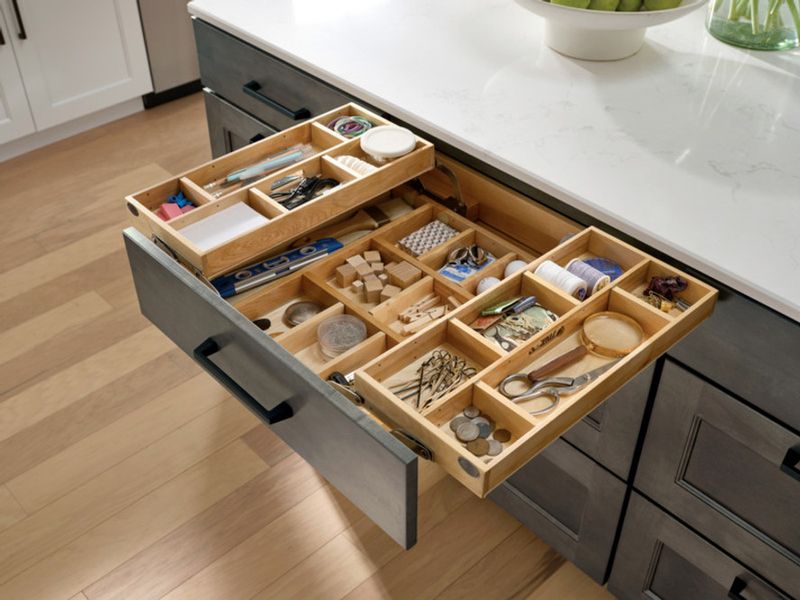
Those afterthought wire baskets retrofitted into cabinets—forever catching dish towels and making everything inside instantly look messy—have been retired from sophisticated kitchens. Their flimsy construction and tendency to collapse under weight betrayed their budget origins.
Wood drawer systems crafted with dovetail joints have replaced flimsy wire racks. Pull-outs now feature soft-close tech and tailored inserts designed for spices, oils, or baking sheets instead of generic metal grids.

